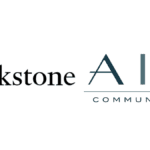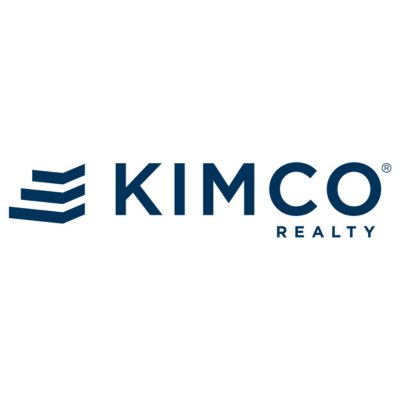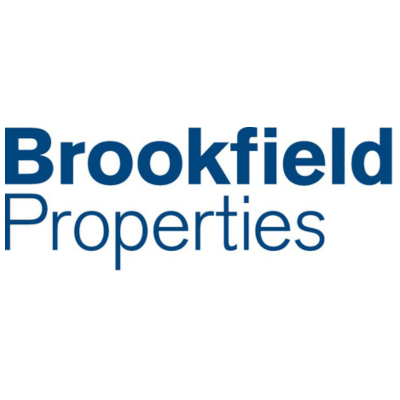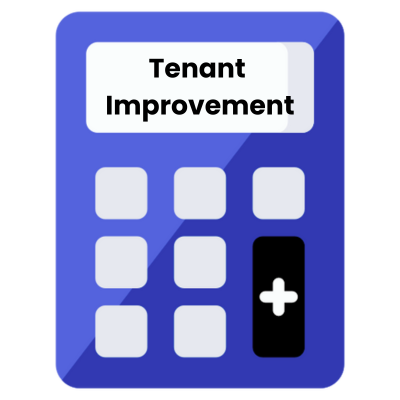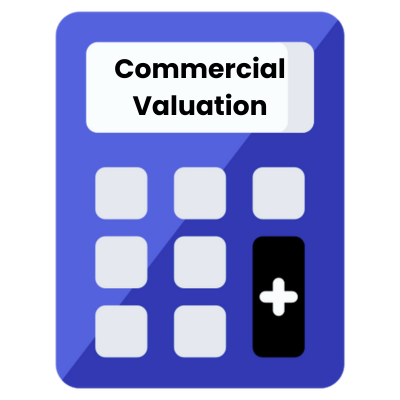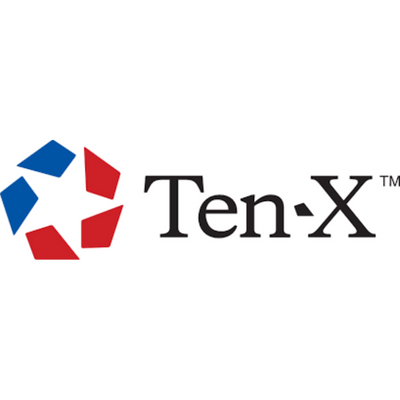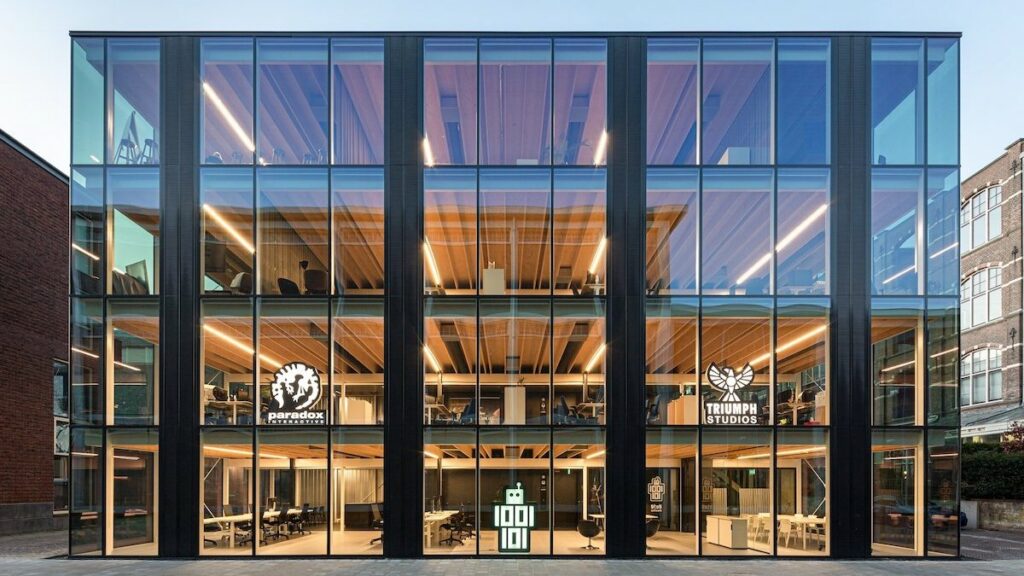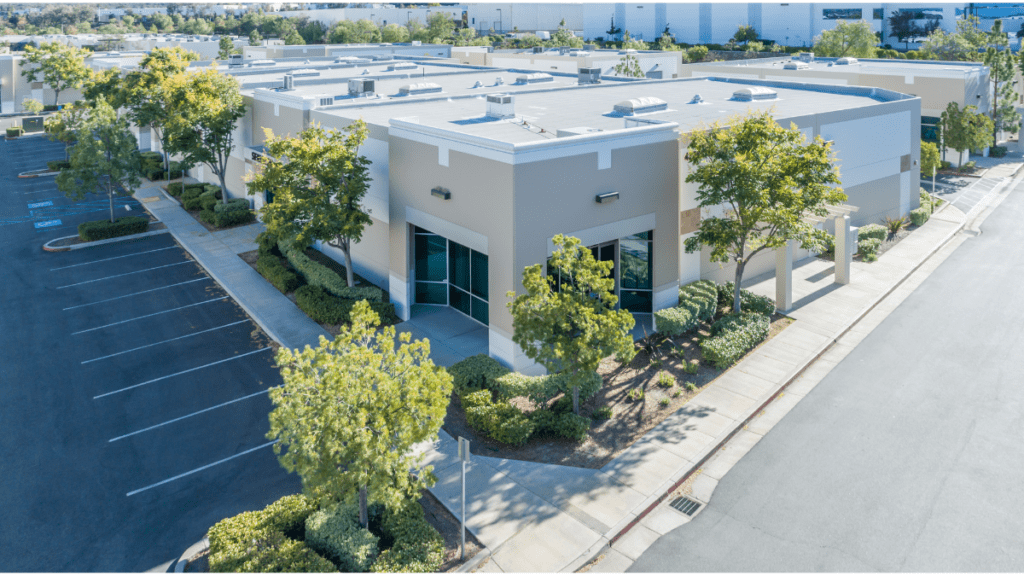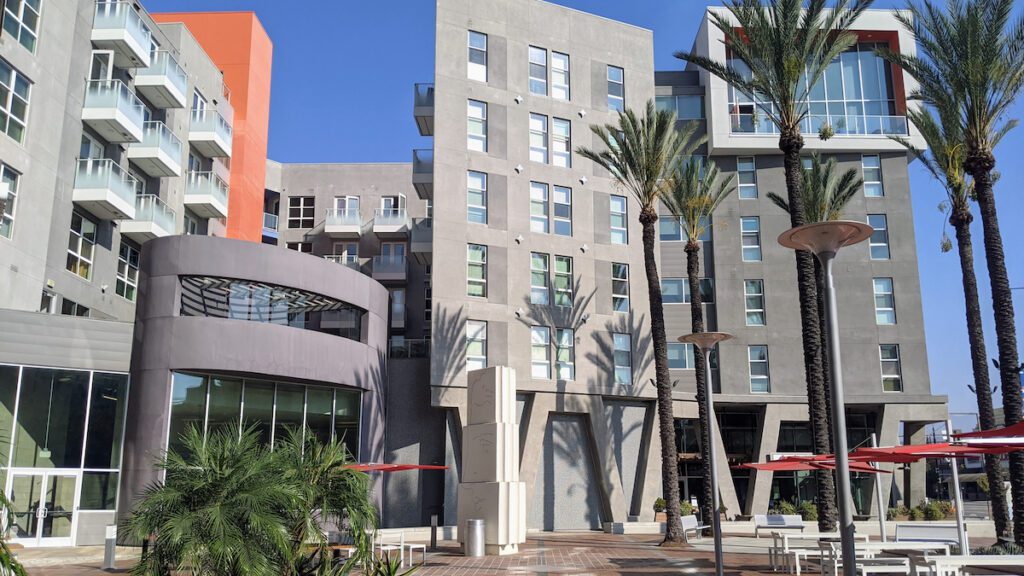Last Updated: March 2024

When you drive through a Starbucks, visit a local Walmart, or spend the day at a local mall, you are interacting with retail real estate. Oftentimes, these global businesses do not “own” the land or building which they operate out of. They “lease” the space or parcel of land (also known as a Ground Lease) from a real estate investor or company. While the thrill of getting a monthly check from Starbucks might sound appealing, retail real estate requires a deep and fundamental knowledge of the asset class to ensure that the property will be successful.
On This Page
- What is Retail Real Estate?
- 9 Different Types of Retail Real Estate
- Retail Real Estate Tenant Definitions
- Commercial Retail Real Estate Classifications
- Top Retail Real Estate Companies
- Retail Real Estate Calculators
- Buy, Sell, Rent Retail Real Estate Online
- Common Types of Retail Property Tenants
- Retail Real Estate FAQ
What is Retail Real Estate?
Retail Real Estate Definition
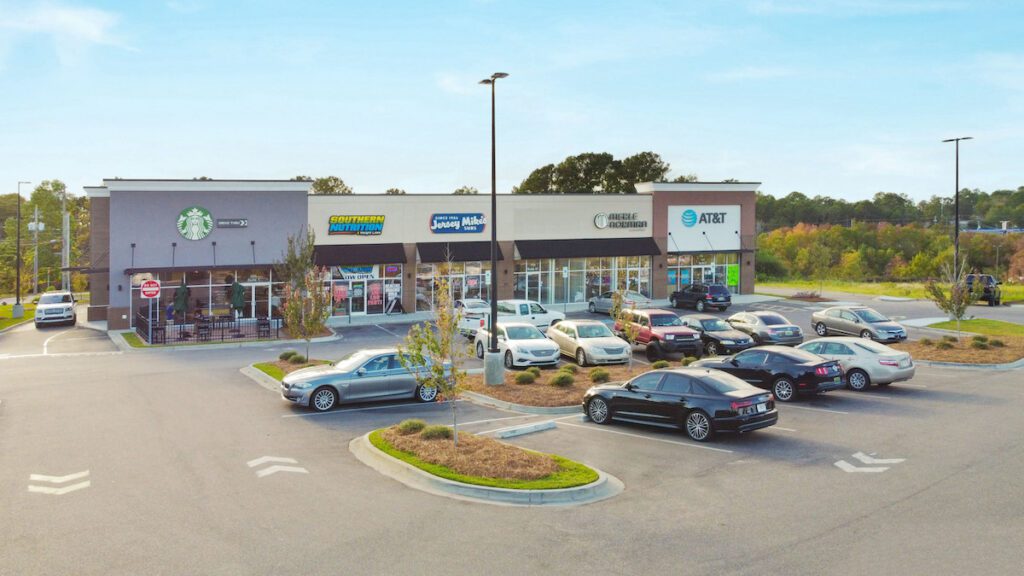
Public facing storefronts used exclusively to market and sell consumer goods and services including Shopping Centers, Malls (both indoor & outdoor), Neighborhood Plazas, Strip-Malls, and In-line Retail Storefronts.
Retail Real Estate Explained
When most people think of retail real estate, they naturally envision a small mom-and-pop store selling miscellaneous goods or even a major retailer such as Target or Walmart that offers virtually any type of product imaginable. While both of these cases are valid examples of retail real estate, the actual asset class actually spans much further into various sizes and uses of properties that can sell everything from durable goods, to restaurants, and even financial services. Retail rental real estate is all about location; a well selected space can bring in decades of strong rent from a national tenant, whereas a poorly selected space can sit vacant for years unable to even attract a small local business.
9 Different Types of Retail Real Estate
Retail real estate is a broad and widely used term, but within this asset class are several types of unique sub-classes that each have their own special characteristics. We explore the most common types of retail properties below:
Freestanding (Single-Tenant)
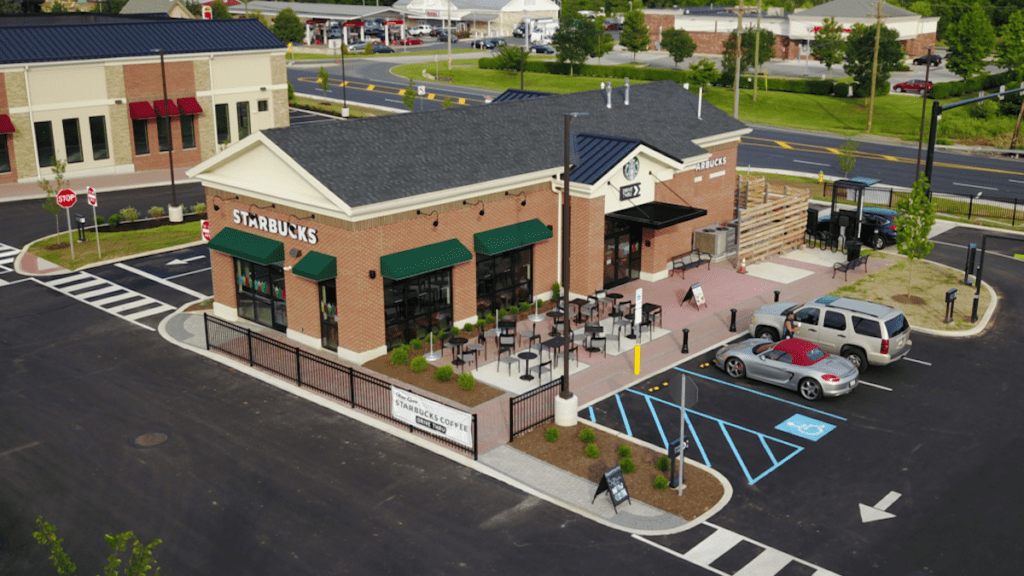
Freestanding retail refers to retail stores and restaurants that are occupied by only one-tenant, and are not attached to any other buildings or structures. Sizes can range from 2,000 up to 100,000 square feet. Business uses of a freestanding retail property are usually restaurants (QSR – Quick Service Restaurants), banks, pharmacies (CVS, Walgreens), specialty use (bowling alley), Warehouse Store (Costco, Sam’s Club) and any other type of branded retail stores that can support its own stand-alone location. Depending on size, they could also either be considered as a big-box retailer or large-box retailer. The benefit of having a freestanding retail location is that the structure provides greater vehicular exposure, visual separation, and a distinct geographic identity. Depending on the location, prime freestanding retail locations are usually leased to national credit tenants on a Single Net Tenant Lease (SNTL).
Inline (Multi-Tenant)
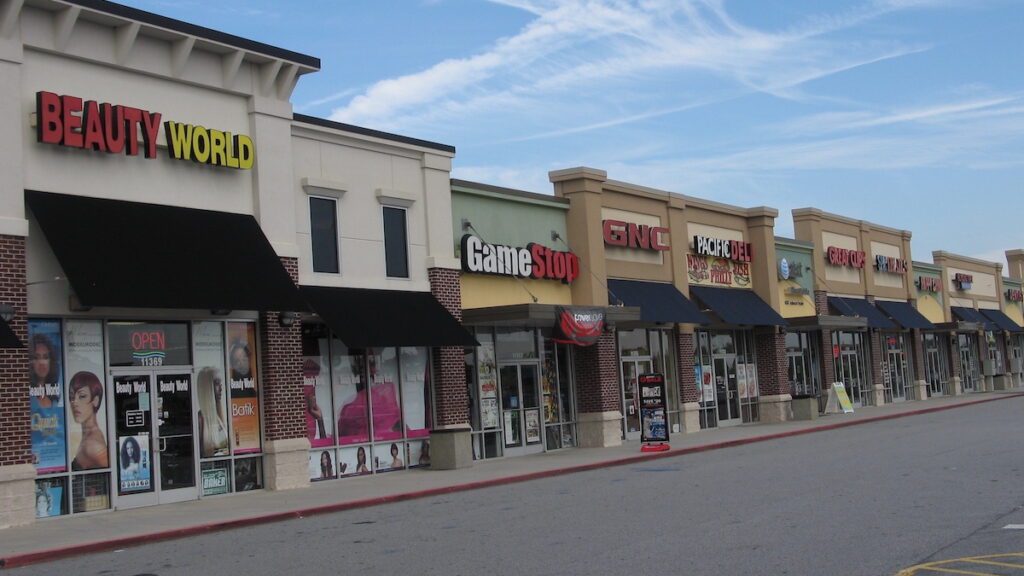
In-line retail real estate can have several different interpretations depending on the use and location. It can refer to a property or retail space that is not freestanding (i.e. adjoining and connected retail storefronts). These types of inline retail locations are often found in a downtown location or densely populated urban city centers where parking is limited but foot traffic is heavy. Conversely, inline retail can also refer to retail spaces that are adjacent to each other in malls or shopping centers. In this case, these types of inline retail locations would all be on the same property or even all under the same roof in the case of a mall. Inline retail properties could be self-managed or managed by a professional commercial property management services company as they grow larger in size.
Convenience Center
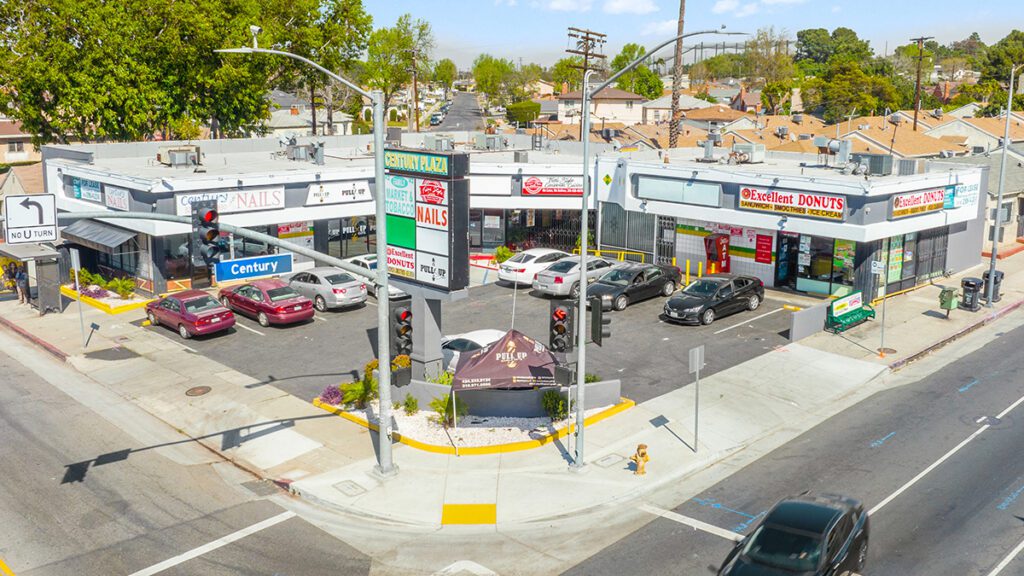
Convenience centers have many different names – Strip Mall, Strip Center, Retail Center, Shopping Plaza. They can easily be visualized as the neighborhood retail center with mom-and-pop stores such as a convenience store (different from a grocery store), nail salon and laundromat. The construction makeup of these usually includes a row of inline smaller sized retail stores with separate external entrances. The stores are usually located on a signalized corner and setback from the street behind a shared parking lot located in front of the stores.
These centers are generally less than 30,000 square feet in size. Smaller sized convenience centers usually do not have an anchor store and just a selection of smaller retail and service stores. Larger convenience centers may have an anchor store such as a grocery store or pharmacy. As the name implies, these retail properties are designed to provide convenience (e.g. retail purchases or services) to a target trade area of a 1-mile radius.
Neighborhood Center
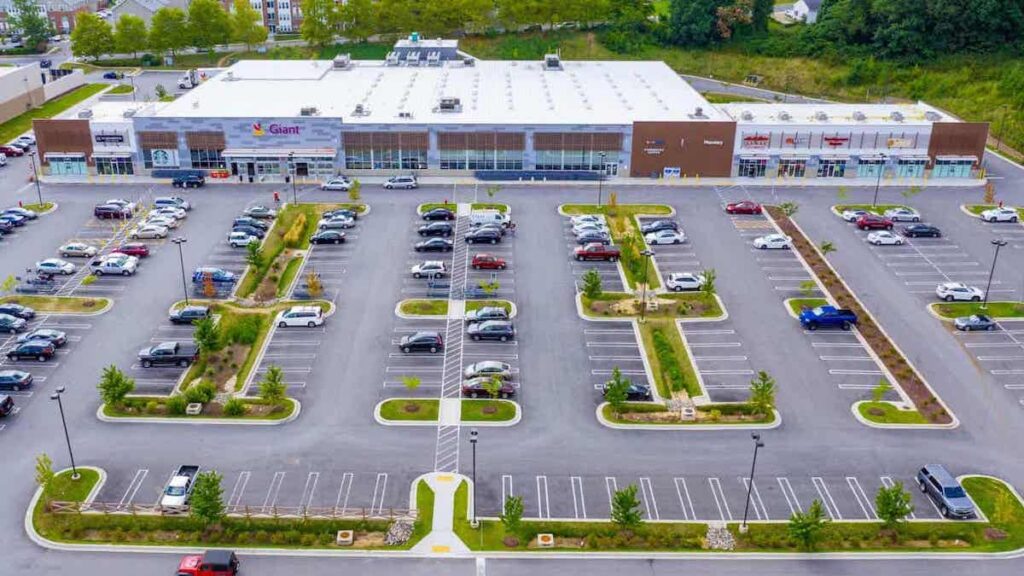
Neighborhood centers (commonly referred to as Shopping centers) first emerged during the 1930’s and have grown to become an important element of the retail landscape in the United States. They are similar to convenience centers by providing local residents with conveniences such as groceries, personal services, pharmaceuticals, restaurants, and entertainment, but are generally larger in size ranging from 30,000 to 125,000 square feet. The construction makeup of these centers usually consist of 1 main anchor tenant, and 5 – 20 inline small and medium sized retail and service establishments that each have their own direct entrances. The stores normally sit behind a large and shared parking lot that may or may not have an outparcel (also called a “pad”) with a freestanding tenant-occupied building such as a restaurant or bank.
Since neighborhood centers often have only a single anchor tenant, the remaining mix of tenants are usually retail stores and service businesses intended to provide the surrounding neighborhood with convenience. The quality of tenants include a mix of local, regional, and maybe some national tenants. These shopping centers are designed to provide customers with day-to-day conveniences. As such, they specifically target the local population within a 3-mile radius as their trade area.
Community Center
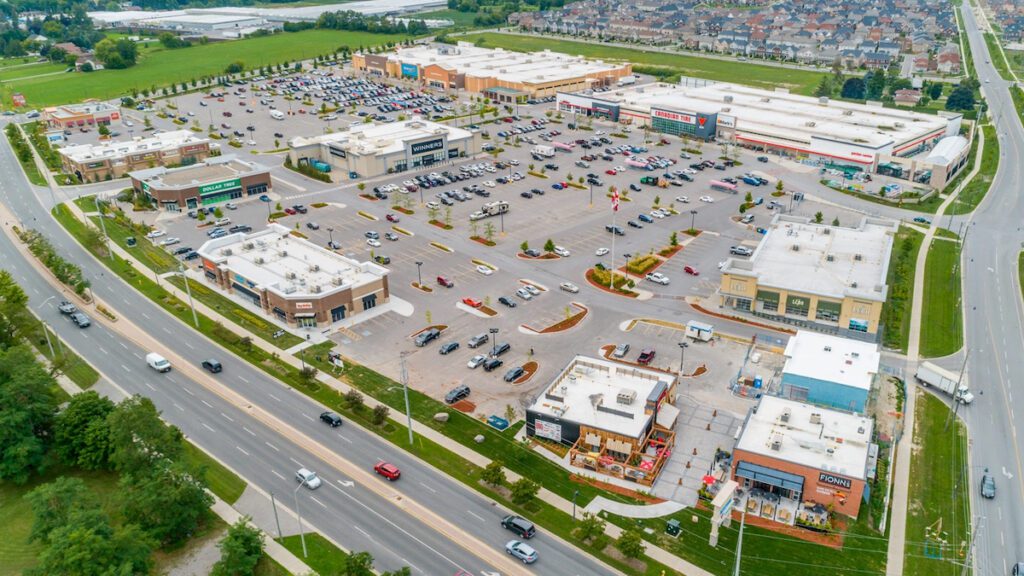
Community Centers (also known as Large Neighborhood Centers) are large shopping centers (also known as Neighborhood Centers) that range in size from 125,000 to 400,000 square feet. The construction layout of these centers can be configured as a straight in-line strip of retail, or as an L-shape or a U-shape, depending on the site design. Stores in a community center are usually located along the outer property edges surrounding a large and shared parking lot. Usually located at the front of the parking lot near the property entrance, are additional stores or out-parcels for freestanding tenant buildings such as a drive-thru restaurant or bank.
The types of stores found in a community center will tend to be focused on general merchandise or convenience-type offerings. Store count can range from 15 – 40 stores and there will usually be at least 2 anchor tenants. Larger anchor tenants found in these centers are typically grocery stores, fitness centers, apparel and/or soft goods stores. In addition to the larger anchor tenants, smaller convenience retailer tenants such as restaurants, dry cleaners, and/or cell phone stores, fill the remaining retail spaces. The quality of tenants usually tend to be more national-credit tenants, but also may include regional and local tenants as well. Community centers specifically target the local population within a 3 to 6 mile radius as their trade zone. This typically translates into a 10-15 minute drive time for customers.
Lifestyle Center
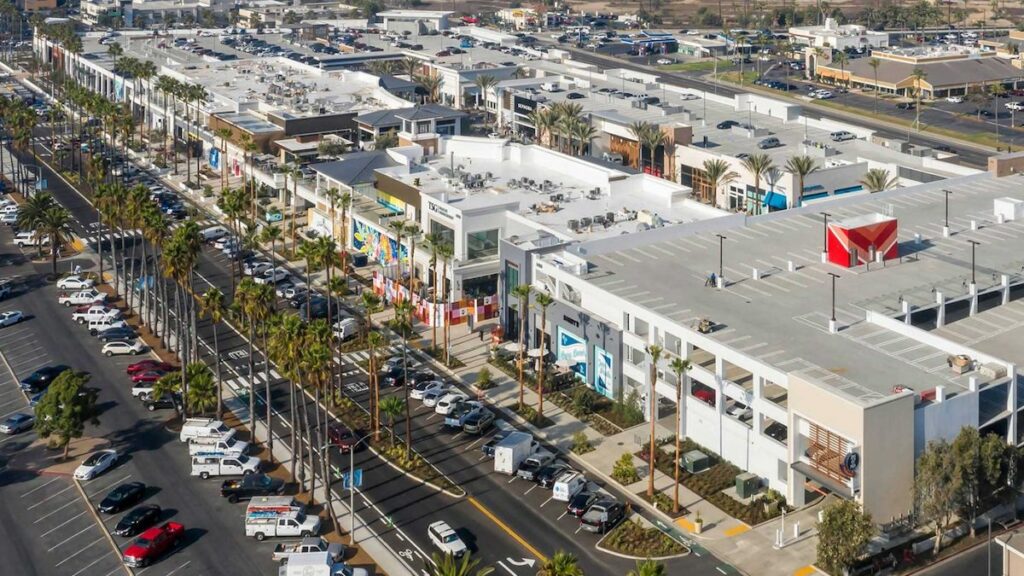
As a rapidly growing hybrid of a community center and regional mall, Lifestyle centers are seeing a rise in popularity by both real estate developers and consumer preferences. These centers came onto the real estate scene in the 1990’s and really took off by the 2000’s. Lifestyle centers are essentially outdoor shopping centers that combine the retail storefronts of a shopping mall, with leisure amenities and entertainment. You can envision it as an upscale mall without a roof. The Grove in Los Angeles is a great example of a successful and well known Lifestyle Center that has now become a tourist destination. They can also incorporate other mixed-use amenities such as apartments and performance spaces.
Lifestyle centers typically range in size from 150,000 to 500,000 square feet. The tenant makeup of a lifestyle center is typically composed of upscale national retailers, along with restaurants, entertainment offerings, and a shared communal outdoor component. Most lifestyle centers do have 1-2 anchors, but usually do not have a department or discount store as the anchor. Lifestyle centers can also offer full-service dining options, including full-sized trendy restaurants. Since lifestyle centers are more focused on a blend of shopping and experiences, they design the stores to match the surrounding demographic. They serve a trade area of an 8 to 12-mile radius, but can often attract customers from either further way with strong branding.
Power Center
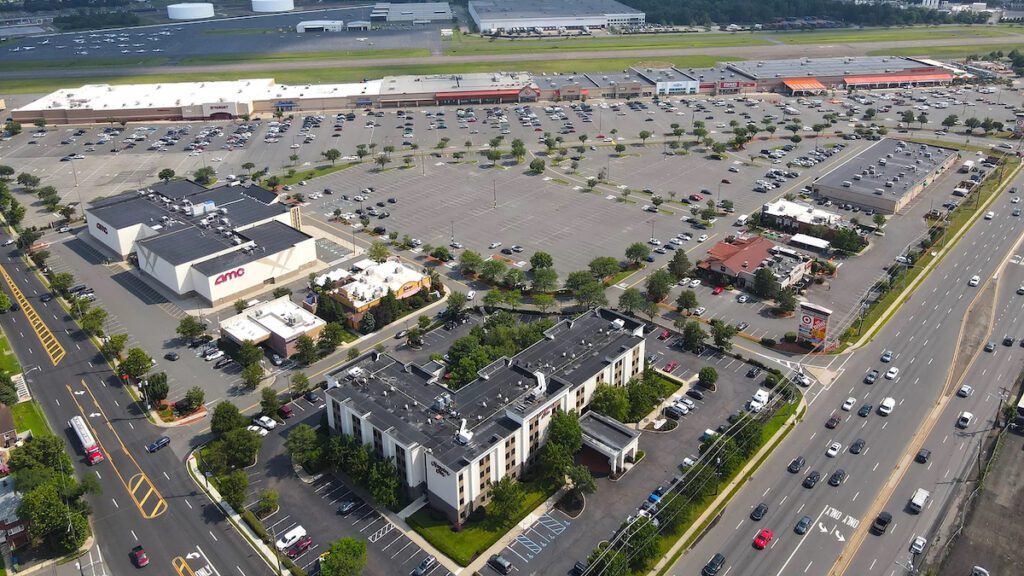
The first official power center was developed not too long ago. Located in Colma, California, it was built in 1986 and named “280 Metro Center”. By 1998, there were 313 power centers across the United States already accounting for over 5% of all national retail sales. Starting in size at approximately 250,000 square feet, power centers can go up to 600,000 square feet. Due to their strong and stable tenant base, these centers are often owned by institutional buyers such as REITs.
Tenant makeup usually includes 3 or more anchor tenants. These anchor tenants often contain at least three big-box stores such as discount-retailers, home-improvement retailers, warehouse clubs, and large specialty chains. The anchor tenants are almost always very well known and creditworthy national credit tenants. The big anchor tenants are complemented by many medium and smaller tenants, but even those tenants are usually national credit tenants. The recent surge in consumer shopping online has caused some of these larger anchor spaces to pivot from retail, to other uses such as fitness, self storage, entertainment, or other non-retail uses that can fill large anchor spaces in the 50,000 to 100,000 square foot range. This change in retail behavior has been coined the Amazon Effect. The real estate industry has countered with Amazon-Proof, which refers to the strength to mitigate disruptions that e-commerce could have on a retail property and its tenants.
Since power centers target a 5 – 10 mile trade area, they thrive on a good location. A good power center location can be defined as one with close proximity to residential areas and convenient access via a major thoroughfare with high traffic counts. If close-by freeway accessibility or visibility is possible, that is even better. In addition to the major anchors and in-line retail storefronts, power centers will usually have multiple out-parcel (pads) with freestanding retail tenants. These pads take advantage of the prime location of power centers, and also provide convenience for the shoppers drawn in by the anchors. How does a drive-thru Starbucks drink before a visit to Walmart sound?
Shopping Mall
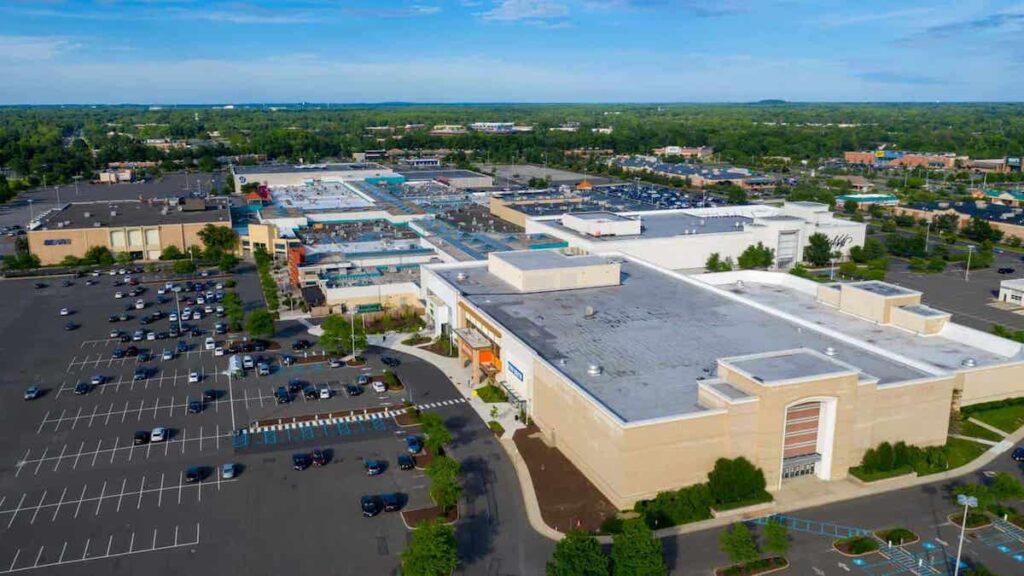
In real estate terminology, a Mall can also be called a Shopping Mall, Regional Mall, or Regional Shopping Center. The first modern shopping mall built in the United States was the Country Club Plaza near Kansas City, Mo., in 1922. Many years of retail progression then led to modern shopping malls that we enjoy today, which really grew in popularity by the 1980’s. Regional malls nowadays start at 400,000 square feet in size and can go up to 800,000 square feet or bigger.
Shopping malls are usually enclosed structures with inward facing retail storefronts that are connected by common walkways.This enclosed design enables shoppers to enjoy all weather shopping, however, the recent rise of e-commerce has forced mall operators to rethink the traditional “all under one roof” mall design and start incorporating more outdoor components. Many older malls have been remodeled to include a hybrid of both indoor space. The outdoor components of these shopping malls has shaped malls to be more “experiential” than just “transactional”. In modern malls, shoppers enjoy retail, entertainment, restaurants, and open spaces to relax. Newer projects are taking this a step further and incorporating live-work-play environments that also include residential apartments in upper levels of the center.
The composition of tenants in a mall usually follow repeatable patterns. Usually two or more large anchor full line department stores that are surrounded by many other national branded tenants or smaller speciality tenants. Retail establishments typically include apparel, jewelry, entertainment, and restaurants. A “food court” of down-sized restaurants surrounding shared seating is typically the food component. In recent years, restaurants have begun to capitalize on the strong foot traffic of malls, and began incorporating full-sized and full-service restaurants that have dedicated exterior entrances. Regional shopping malls are usually located along major thoroughfares, with preferred nearby interstate access. This ease of access allows these malls to target a wider trade size area, which is usually 5 – 15 miles. To further drive additional traffic, regional malls often utilize their vast parking areas by leasing out parcels (pads) to freestanding retail tenants such as fast food restaurants, banks, and other well-known retailers.
Super-Regional Mall
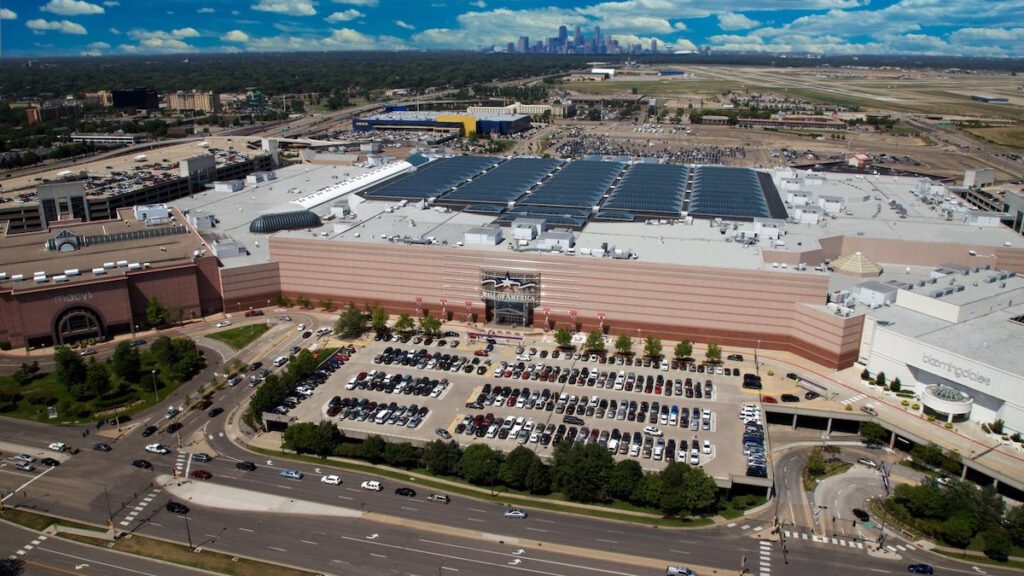
As a step-up from a Regional Mall, Super Regional Malls are similar in concept but at a larger size. Their size starts at 800,000 square feet and usually go up to 2,000,000 square feet. Depending where in the world you are, a Super Regional Mall may be considered a “Mega Mall” or “Super Mall”. For reference, currently the largest mall is the Iran Mall in Northwest Tehran, Iran that totals 1.4 Million Meters (15 Million square feet) in gross leasable area.
The tenant makeup of a super regional mall normally includes at least 3 or more anchor tenants, who will occupy 50% to 70% of the gross leasable area. The types of these anchor tenants are usually department stores, entertainment venues, discount department stores, large fashion apparel stores, and a mix of other uses. Many of these anchor tenants can also be found in a regional mall (see above). Super regional malls are typically well located along major thoroughfares near interstate access. Their expansive size allows them to target the largest trade area of any other type of commercial retail property – 5 to 25 miles. Similar to regional malls, they utilize their vast parking areas by leasing pads to freestanding retail tenants. Some may even take this a step further by encapsulating an entire mini-retail strip into the edges of a super regional mall property.
The #1 Rental Property Newsletter
Once a month, we send out an exclusive Rental Property Market Update with top stories, current mortgage rates, building products, and more. No spam and unsubscribe anytime.

Retail Real Estate News
- CoStar Group Acquiring Matterport Spatial Property Data Company in $1.6 Billion Deal

- Blackstone Acquiring Multifamily Owner AIR Communities for $10 Billion

- Property Meld and Lula Launch ‘Vendor Nexus’ Program

Retail Real Estate Tenant Definitions
Anchor Tenant Defintion
An Anchor Tenant ( also called an “anchor store“, “draw tenant“, or “key tenant“) is a larger retail tenant which usually draws in a substantial majority of customers into the overall retail property. Examples of anchor tenants are Walmart, Publix, or Home Depot.
Shadow Anchor Tenant Definition
A Shadow Anchor is any retail tenant within a shopping center that generates significant traffic and attracts business to the shopping center, but is secondary to a nearby Anchor Tenant.
QSR (Quick Service Restaurant) Definition
A QSR is a type of tenant that occupies a retail property with a “Quick Service” restaurant use that is generally a fast-food franchise such as McDonalds, KFC, Subway, or similar. QSR properties are usually freestanding but can also be in-line or end-cap.
Big Box Retailer Definition
Big Box Retailers are large retail buildings that are occupied by one tenant tenant who typically sell general merchandise (Walmart and Costco) or specialty products (The Home Depot and Best Buy). They are among the most desirable retail tenants for their stability and credit worthiness.
Commercial Retail Real Estate Classifications
Class A
Class B
Class C
Commercial real estate is a diverse sector that offers investors opportunities to generate income through various property types, such as office buildings, retail centers, and industrial facilities. To better evaluate and compare the investment potential of these assets, commercial properties are often classified into three categories: Class A, Class B, and Class C. Each class is distinguished by factors like location, building quality, age, and tenant profiles, enabling investors to make informed decisions that align with their risk tolerance, investment objectives, and management preferences.
Top Retail Real Estate Companies
The commercial retail real estate sector includes a variety of property types, from sprawling shopping malls and outlet centers to neighborhood strip malls and urban storefronts, each serving different consumer needs. The largest retail real estate companies, specialize in developing, managing, and investing in these properties, and they adapt to changing consumer behaviors and retail trends. The evolving landscape of this sector (e.g. e-commerce growth, pandemic accommodations) underscores the importance of these companies in shaping retail environments and experiences.
Retail Real Estate Calculators
Buy, Sell, Rent Retail Real Estate Online
Commercial real estate listing platforms across the internet attract millions of visitors every year and streamline the buying, selling, and renting process. Retail real estate investors and tenants use these platforms to easily find available properties in almost any market. Those looking to sell or lease retail properties also benefit from these platforms by getting their listings in front of countless potential buyers and tenants.
Common Types of Retail Property Tenants
Retail tenants come in many different variations. They range from smaller mom-and-pop style tenant such as local convenience stores, up to nationally recognized big-box retailers such as Walmart. Below we take a look at some of the most common types of retail tenants that can be found in commercial properties:

- Banks (Walk in & Drive-Thru)
- Big Box Retailers
- Discount Stores
- Grocery Chains
- Mom-and-Pop Convenience Stores
- Convenience Services (Dry Cleaners, Nail Salons, Laundromats)
- Pharmacies
- Restaurants – Locally Owned & Operated
- Restaurants – National Brand Franchise
- Restaurants – Quick Service Restaurant (QSR)
- Specialty Retail
Search Rental Real Estate
Try searching out site for hundreds of rental property topics ranging from property management, investor tool reviews, investment research, and more.
Retail Real Estate FAQ
How are Retail Rental Property Rates Determined?
Rental rates for retail properties are influenced by a complex array of factors that reflect both the physical characteristics of the property and the broader market dynamics. These rates are crucial for both landlords and tenants, as they directly impact the profitability and sustainability of retail operations. Understanding the key elements that determine these rates can help in making informed decisions about leasing and investment.
- Location: High-traffic areas like city centers or popular shopping districts command higher rates.
- Foot Traffic: Properties in areas with high pedestrian flow typically have higher rental value.
- Anchor Tenants: The presence of major retailers or anchor stores can increase the desirability and rental rates of nearby spaces.
- Property Size and Layout: Larger spaces and those with favorable layouts for retail operations often attract higher rents.
- Market Demand and Supply: The balance of available retail space versus the demand in the market significantly impacts rental rates.
- Economic Conditions: Broader economic trends can affect consumer spending and, consequently, retail rental prices.
- Accessibility and Visibility: Easy access and high visibility can enhance a property’s value.
- Condition and Age of the Property: Well-maintained and modern properties can command higher rents.
- Local Amenities: Proximity to amenities like parking, public transport, and other retailers can influence rates.
- Lease Terms: Factors like the length of the lease, escalation clauses, and any concessions offered by the landlord can also play a role in determining rental rates.
Is Retail Real Estate Investing Still Good With the Rise of E-Commerce?
Retail real estate investing remains a viable option even with the rise of e-commerce, but it requires strategic adaptation to changing consumer behaviors. Investors are finding success by focusing on properties that cater to businesses less affected by online competition, such as restaurants, service-based industries, and retailers offering unique in-person experiences. Additionally, some are repurposing traditional retail spaces for mixed-use developments, combining retail with residential or office spaces, to create more resilient and diversified investment opportunities.
What is the Difference Between In-Line vs End-Cap Retail Spaces?
When commercial retail tenants are selecting a location for their business, they seek for the best space that fits their business use. Regardless of location, most retail spaces can be classified as either “In-Line” or “End-Cap”. Pro Tip: When choosing End Cap vs In-Line space, commercial retail tenants should consider their business needs first then evaluate the true need and difference in pricing.
End-Cap
End-caps are the retail units located at the end or corner of a retail building. They are desirable because they offer greater visibility and more signage opportunities than in-line spaces. As such, landlords typically demand higher prices per square foot for end-caps and reserve them for specific uses such as food service businesses since they are able to build drive thru windows and patios for customers.
In-Line
In-line spaces are the retail units that are non end-cap and located contiguous with other in-line units. These units are usually occupied by secondary tenants such as nail salons and retail that do not need maximum visibility or an exterior component such as patio or drive-thru. In-line units typically have frontage visibility only and are priced less than end-cap spaces.
More Types of Commercial Real Estate
About the Author

Ryan Nelson
I’m an investor, real estate developer, and property manager with hands-on experience in all types of real estate from single family homes up to hundreds of thousands of square feet of commercial real estate. RentalRealEstate is my mission to create the ultimate real estate investor platform for expert resources, reviews and tools. Learn more about my story.
Disclaimer: The information provided on this website does not, and is not intended to, constitute legal and/or financial advice. As such, all information, content, and materials available on this site are for general informational purposes only. Please review our Editorial Standards for more info.


